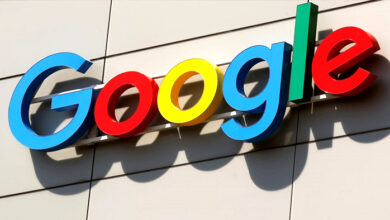Google uses quantum mechanics at a lab in California to track down uncertainty.

Quantum mechanics is an area of study that scientists might one day use to help stop global warming.
Goleta (AFP): Outside, the warm September sun warms a beautiful coast while California enjoys another perfect day.
Some places inside are -273 degrees Fahrenheit (-460 degrees Celsius) cold, which seems impossible according to the rules of quantum mechanics, which say that things can be both there and not there at the same time.
This is Google’s Quantum AI Laboratory, where dozens of very smart people work in an office with climbing walls and electric bikes to make the next generation of computers, which will be different from anything people have in their pockets or offices right now.
Erik Lucero, the lead engineer at the campus near Santa Barbara, says, “It’s a new kind of computer that uses quantum mechanics to do calculations and lets us solve problems that would be impossible to solve otherwise.”
“It won’t replace your cell phone or your computer; it will work in addition to those things.”
Related: Indonesia is looking into Google’s payment system for the App Store.
Quantum mechanics is a field of study that scientists say could one day be used to help stop global warming, plan traffic systems for cities, or come up with powerful new drugs.
Because the potential is so great, governments, tech giants, and start-ups from all over the world are investing billions of dollars and hiring some of the smartest people they can find to work on it.
Schrödinger’s Cat
Old ways of computing are based on the idea of binary certainty. This means that there are tens of thousands of “bits” of data that are either “on” or “off,” which is shown by a one or a zero.
Quantum computing is based on uncertainty. Its “qubits” can be both “one” and “zero” at the same time. This is called “superposition.”
Schrodinger’s Cat is the most famous example of a quantum superposition. It is a made-up story about an animal locked in a box with a flask of poison that may or may not break.
The cat is both alive and dead when the box is closed. But once you change the quantum state and open the box, the answer to the question of whether the cat will live or die is clear.
Quantum computers use this uncertainty to do a lot of calculations that seem to go against each other at the same time. It’s kind of like being able to go down every path in a maze at once instead of trying each one in turn until you find the right one.
The hard part for the people who make quantum computers is getting these qubits to stay in this state long enough to do a calculation.
As soon as noise, dirt, or the wrong temperature gets in the way, the superposition breaks down, and you’re left with a random answer that probably doesn’t make sense.
Google showed journalists a quantum computer that looks like a steampunk wedding cake turned upside down and hung from a frame.
Related: S. Korea gives Google and Meta billions of won in fines for breaking privacy rules
Each layer of metal and curved wires gets colder until the final stage, where the palm-sized processor is cooled to just 10 millikelvin, or about -460 Fahrenheit (-273 Celsius).
This temperature, which is just a little bit higher than absolute zero, the coldest temperature that can be reached in the universe, is important for the superconductivity that Google’s design depends on.
Even though the layer-cake computer isn’t very big—it’s about half as tall as a person—the equipment to cool it takes up a lot of room in the lab. Pipes with helium dilutions compressing and expanding keep the computer cool in the same way that your fridge does.
But… what is the point of all of this?
Well, Daniel Lidar, an expert in quantum systems at the University of Southern California, says that it’s a field that has a lot of potential but is still young.
“We’ve learned how to crawl, but we don’t know how to walk, jump, or run yet,” he told AFP.
The key to its growth will be figuring out how to solve the problem of superpositional collapses, or “opening the cat’s box,” so that calculations can be made that make sense.
As this process of fixing mistakes gets better, problems like optimising city traffic, which is very hard for a traditional computer to do because there are so many independent variables (the cars), could become easier to solve.
“You could solve that problem on a quantum computer that could fix mistakes,” he said.
For Lucero and his friends, these possibilities for the future are worth the headache.
“One of the best ways to understand nature that we have now is through quantum mechanics. This is a computer that can talk to the world around it.
“And if we want to go out and solve these really hard problems, like climate change, to help save our planet, then I’d want a computer that can do just that.”





